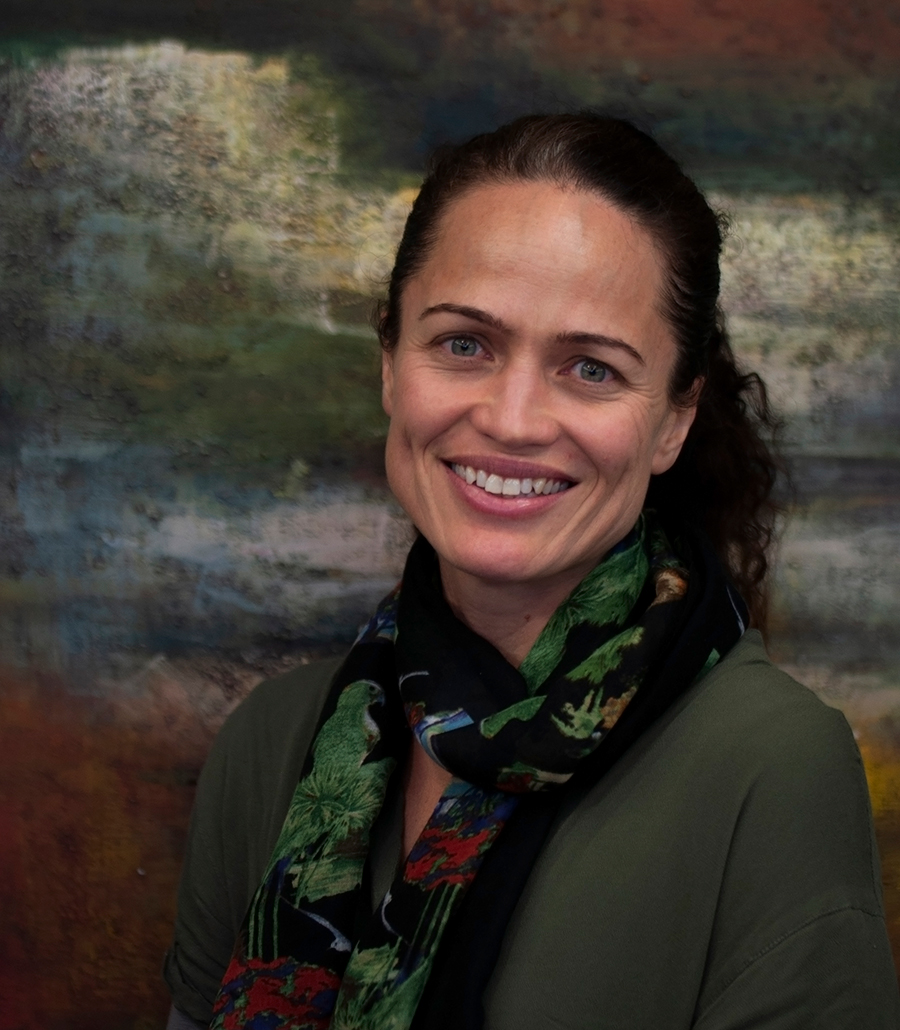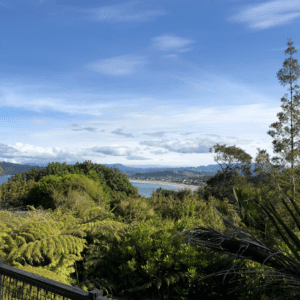Tēnā tātou katoa. He uri tēnei nō Ngāti Hine, me Ngāpuhi. Ko Tokerau te maunga, Ko Taumarere te awa, Ko Waiomio te whenua. I tipu ake ahau kei Tāmaki Makarau ki te tonga i te taha o tōku Māmā – no Ingarani ia. Ko Wallasey te whenua, Ko Cheshire te rohe, Ko Mersey te awa. Nō reira, he Māori, he Pākehā ahau. Tokotoru aku tamariki, kei Porirua mātou e noho ana.
He mihi maioha ki te kaipānui.
All my life I’ve wanted to write fiction. Not sci-fi or fantasy but the kind of fiction that’s believable. Characters so real that when you’re finished with them the reader is convinced they exist. A few years ago, living in Abu Dhabi as an expat and stay-at-home mum, I had the opportunity to give this dream a shot. Every day, after dropping the kids off at school, I sat down to write. I wasn’t entirely sure of the plot or the characters, so I started with exposition (fancy word for blabbing-on). It sounded brilliant, but by the next day, I could see it for what it was: a yawn-fest.
I moved on to writing scenes. I used my kids as inspiration. These stories were better, with the added bonus that the kids loved them. Each day, they’d jump in the car and ask if I’d written another chapter. They’d argue with each other about the story arc of ‘their’ character and push me towards outrageous and implausible plot twists. But it was hard to get these fictional characters to do what I wanted them to do. The caution I had to exercise to protect my kids’ feelings was like writing in a cage. I was more captive than captivating.
Eventually, I gave up writing and started reading. Not leisure reading, but the kind of reading that takes hours and hurts. I deconstructed passages of my favourite novels the way an architect might eye up a building to see how it’s put together. The more impressive the novel, often, the more invisible the author.
One weekend, enrolled in a writing workshop, a teacher asked us all a question: ‘Who feels as though they have a story to tell?’
I didn’t dare put up my hand. In fact, I suddenly felt ridiculous. I had no story to tell, and this frivolous dream of writing a book became apparent for what it was: self-indulgent and egotistical. I finished the workshop and went home and not long after that we came back to New Zealand.
I returned to what I knew: policy and research. The thing is, I didn’t stop writing. Instead, I stumbled into a genre I didn’t even know had a name: creative non-fiction. To me, I was just writing introspective, rambling stories about the things I cared about: my reo journey, my kids, education issues and a few long-winded pieces on identity politics.
E-Tangata gave me my first break in 2015, publishing the first essay I sent them. From there, I had a few other things published, and I won a couple of awards (thanks NZSA and Michael King Writers Residency). Then along came Te Papa Tupu. I thought for a long time before throwing my hat in the ring. Resurrecting the dream of writing a book was something that filled me with unease, not just because I was scared of failing (again), but because I wasn’t really sure if I was ready.
Most of the essays I’ve published up until now have been pretty formulaic – 1500-word think pieces pivoting around a single idea or theme. They’ve tended to explain rather than explore. They’re persuasive essays intended for an online audience, but they stop short of deep introspection. The manuscript I sent in to Te Papa Tupu was something quite different. They’re still essays, but they’re longer and more personal. They don’t deal with just one idea or theme but multiple. The stories are about people and relationships as much as they are about issues.
This is the real reason I was afraid: in telling my story, I invariably end up telling the stories of everyone else close to me. My whole family gets implicated. Fiction seems so much safer because you can hide the truth behind a veil. But these aren’t made-up characters, they’re real people, and they all have a stake in what I have to say.
I wasn’t sure what scared me more: that my manuscript would be rejected or that it would be accepted.
In the end, I’m so glad it was accepted. I feel like I’m exactly where I need to be to work through these doubts and fears. The first workshop emphasised manaakitanga as a foundation of this programme. As well as creating the conditions necessary to become a better writer, we’re supported through strong relationships. My mentor is Paula Morris, someone who I’ve admired and looked up to for a long time. I get the sense that she’s going to be tough, but I know that the quality of my work depends on it. I’ve also been fortunate enough to spend some time with John Huria, whose feedback has helped me see so much more potential in this genre than I’d ever seen before. In addition to our mentors, we have each other – five other writers going through a similar journey.
It’s early days, but my unease has already begun to dissipate. I’m beginning to feel more excited than nervous. Outside the restrictions of the formulaic 1500-word essay, I can sense a freedom to explore language and ideas and to weave history and research into the narrative. I’m keen to challenge myself in new ways and in new directions. Best of all, I can see all the skills of fiction that I spent all those years trying to master finally coming into play.
I’m looking forward to writing about this journey here on the blog. I’d like to use this forum to discuss the mentoring process and to share some of the highs, lows and general insights. If you’re interested in reading some of my essays, please feel free to stop by my website: nadineannehura.co.nz. You can also read a more in-depth piece about Te Papa Tupu that I wrote for The Spinoff here.
And if you’re reading this feeling as though you might have a story to tell and wondering if Te Papa Tupu could be for you, chances are it is! Don’t let the doubts get the better of you. Keep writing, keep reading – and one day it’ll be your turn to write this blog.
Noho ora mai.
Nadine





